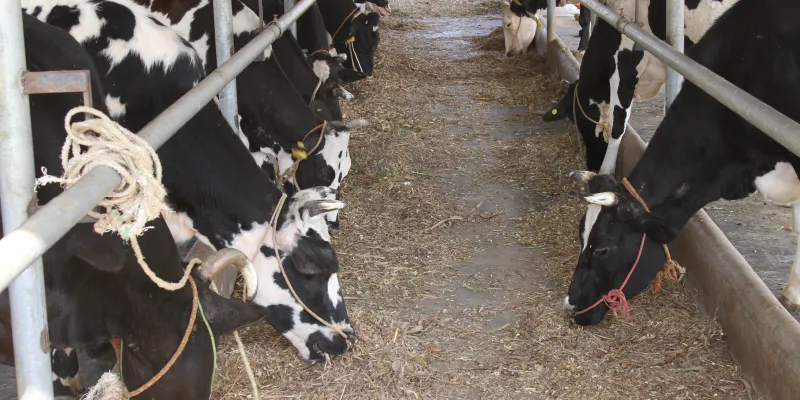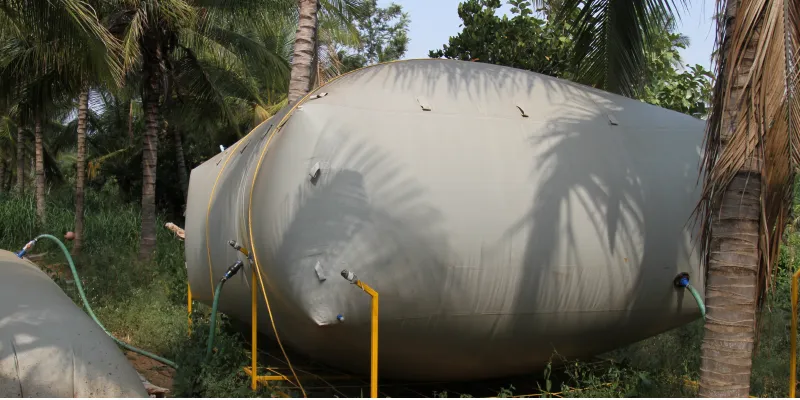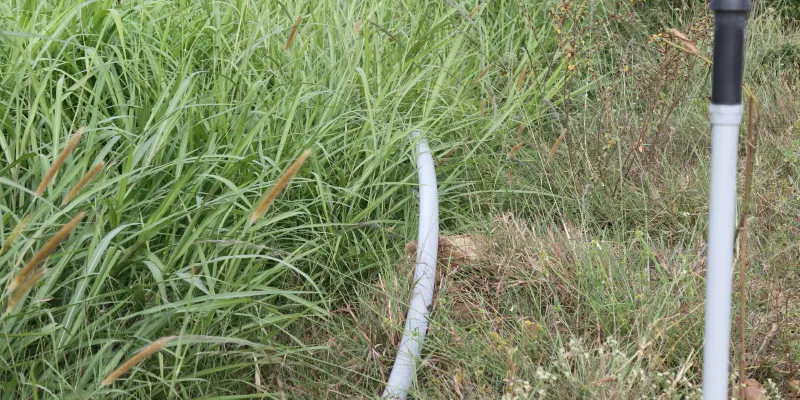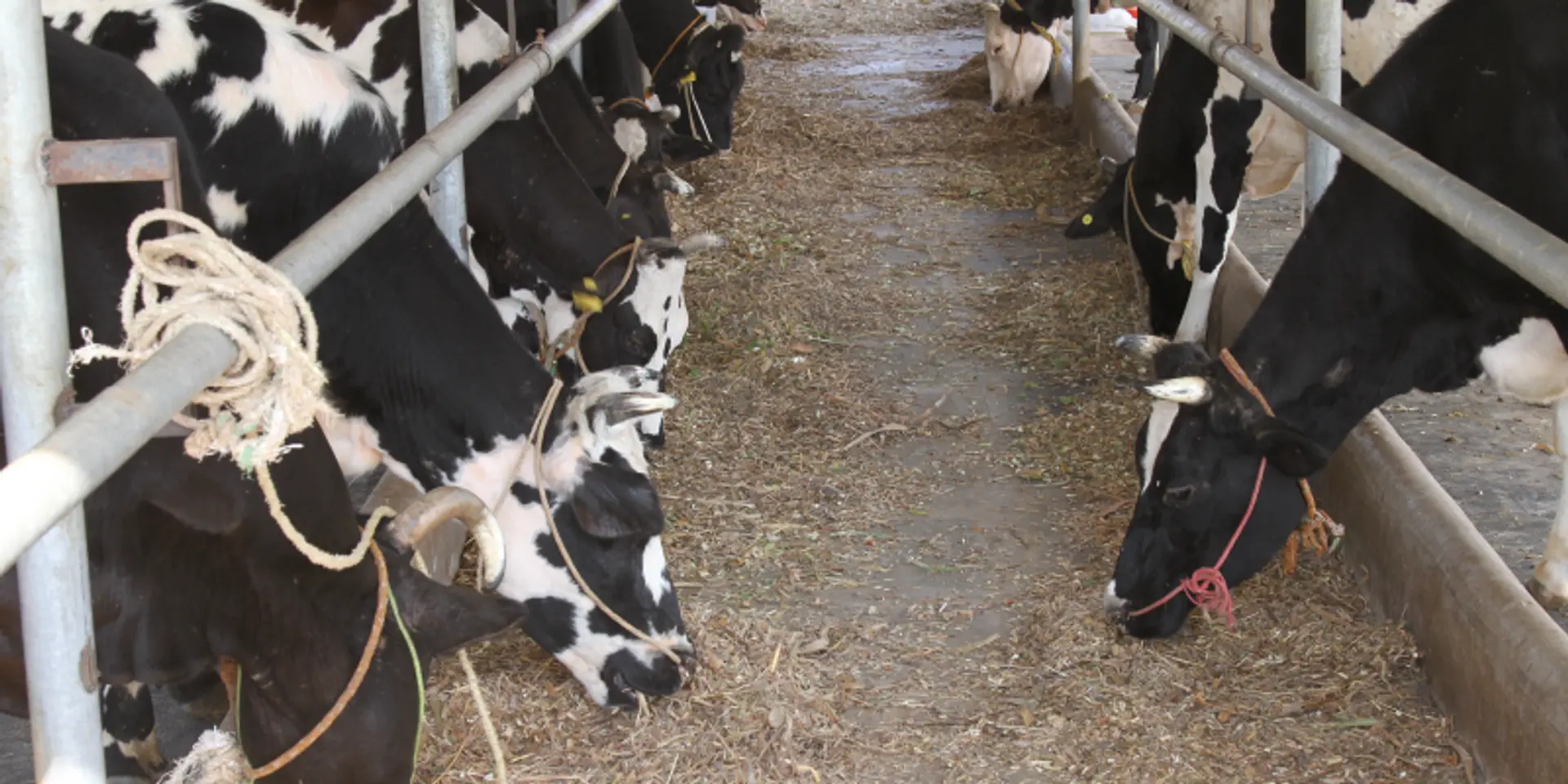Tiptur’s Akshayakalpa wants to make farmers entrepreneurial through dairying with design; aims at Rs 1 lakh monthly income
The dairy in Tiptur is a picture of thoughtful efficiency. The steel-roofed shed is airy. The cemented floor has rubber mats for comfort. Cows and calves are stall-fed but not tethered. There are free to graze. Dung is cleaned promptly and flushed into a digester, which in turn is connected to two biogas balloons. The gas is used as cooking fuel and powers an electricity generator. The slurry from the digester is pumped into a coconut garden. It also fertilizes fodder and pigeopea crops. Milking machines ensure hygiene. Milk is chilled immediately on site. This is dairying without drudgery.

Keeping milch cows used to be quite tough earlier. Now it is rather easy, says Sunil, who has studied till the 12th standard. We are at his dairy in Alur village in Tiptur taluk of Karnataka’s Tumakuru district, about 150 km from Bengaluru. The dairy has 22 animals, of which 16 are cows, 12 of them milk-giving. Sunil has invested Rs 10 lakh, including the 10 cows which he owned earlier. A group of urban investors has put in Rs 25 lakh. The dairy produces about 65 litres of milk a day. A company called Akshayakalpa pays between Rs 28 and 32 a litre depending on fat content.
Sunil says he makes over Rs 60,000 a month. Almost all of it is profit, as he has stopped buying feed. The animals are fed with grass grown in the adjoining fields, leaves and protein-rich algae called azolla.
The two other dairies in the vicinity which we visit are alike except for their location and ownership. Even the animals, local breeds crossed with high-yielding Jerseys and Holstein Friesians, for better adaptability, are undistinguishable. Shankareshwar Param of Vittalapura village says he is as active as before, despite the aid of machines, because he has more animals to tend to. But it is quite a change from keeping cows in kotadis or dingy mud-walled sheds. This is dairying with design.
There are 130 such dairies in Tiptur supplying milk to Bengaluru. They are linked to Akshayakalpa, a private company, set up by Guddahatti Nanjunda Srinivas Reddy, a non-practicing veterinarian, who until 2010 was associated with a Pune-based NGO called Bharatiya Agro Industries Foundation (BAIF), engaged in rural development. The principles on which the social enterprise is based have been gleaned from that experience.

Risk and reward are said to be directly related; higher the risk, the higher should be the reward. But the equation is skewed in agriculture as practised in India. Farmers face a variety of risks from erratic weather, to volatile markets to whimsical government policies. While their losses are not capped, their upside is. For most small-holder farmers, agriculture is a losing proposition.
This, GNS Reddy believes, is because agriculture is not an enterprise. Farmers think losses are inevitable. He contrasts this with the mentality of a pan-beeda seller, who will not hesitate to shift his kiosk from a losing location to another where he expects to make money. The key to infusing the entrepreneurial culture into agriculture is organization.
Akshayakalpa is envisaged as an enterprise of farmer-entrepreneurs. Farmers are provided the design, advised on equipment sourcing, given support services like maintenance and vaccinations, trained in animal care, helped with financing and assured of marketing, so that the farmer-family can focus solely on the production aspect. The aspiration is to ensure a monthly income of Rs 1 lakh without the physical grind that traditional dairying and farming entails, so that youth are attracted to remain in villages rather than forced to migrate to cities.
Akshayakalpa’s business is based on certain principles. The animals should only be fed with grass, leaves and azolla grown on the farm. To meet this requirement, a farm should be of at least five acres. It must have a water source so that protective irrigation can be provided in summer. Sprinkler irrigation is insisted upon, though drip irrigation is preferred.

Reddy disapproves of feed. He says it fattens suppliers at the cost of farmers. Feed is not only a drain of cash, it is incompatible with the digestive system of ruminants, Reddy says. They have been programmed by evolution to process fibre; grain and de-oiled cakes produce acidosis, which damages animal heath and impacts milk production. Oil cakes are also susceptible to fungal attacks. Aflatoxin produced as a result can harm humans, especially babies. Akshayakalpa’s milk therefore commands a premium. It sells for Rs 60 a litre in Bengaluru. In Delhi, Mother Dairy’s full cream milk retails for Rs 50 a litre. And it is all cow milk. Reddy finds buffaloes difficult to manage.
Akshayakalpa says it sells 8,000 litres daily. It wants to scale up to meet demand. Ghee is priced at Rs 1,000 a litre, which is a stiff premium to brands that do not sport the organic tag, and retail for around Rs 400 a litre.
Reddy encourages buyers to drink milk without boiling, which, he says denatures protein and breaks its bond with calcium, inhibiting absorption by the body. There is no risk of contamination, as milk supplied by Akshayakalpa is hygienically extracted and promptly chilled. Reddy believes ‘mother cow’ puts ‘bio-protectors’ in milk. There are 15 active enzymes in milk, he says, which block harmful bacteria, making milk ‘truly amruta.’
(The National Dairy Research Institute in Karnal, Haryana, admits that boiling degrades milk protein, but the loss in nutritional value is acceptable. Even if the udder is thoroughly cleaned, the cow can shed pathogens, so it advises pasteurization).

No business can succeed if it is undercapitalized. Reddy says the ideal farm should have 25 cows, with about 16 giving milk at any time. This would require an investment of Rs 25 lakh. The payback period is 3.5 years.
Another of Reddy’s quirks, if one can call it that, is his insistence on owners being hands-on. Animals can distinguish between owners and employees. Abuse and ill-treatment, more likely if the hands are hired, will tell on output. For this reason, he discourages larger farms as owners will not be able to devote personal attention.
Sadly, Reddy’s associates have had little luck with banks. They hesitate to lend. Reddy has turned to a group of seven investors, based in Bengaluru, Hyderabad and Ahmedabad, who have put money in two dairies in Tiptur. Some of them are information technology professionals. One owns pharmaceutical units. Another has a resort in Kutch and exports dates.
The group is called Mission 2020. They have an affinity to agriculture, but not the time for it. ‘We have taken it up as a research project, says Sandeep Kamath, a marketing consultant and secretary of the Biodynamic Association of India. (Biodynamic preparations are made from buried cow horns filled with banyan tree soil, which is said to produce microbes that can enrich compost and ward off fungal diseases. The Indian Institute of Farming Systems Research at Modipuram near Delhi, says the claims made for them are exaggerated).
The group aims at 200 litres of milk per dairy per day. It is willing to meet a part of the capital and operational expenditure. It expect a return of around 18 percent. If inclined, investors can continue as partners, or exit after a few years by selling their share to the farmer-owner.
Reddy believes his model can apply to other agricultural activities to. He is not fixated on dairying. ‘If tomorrow keeping donkeys can give Rs 1 lakh a month, we will do that.’







